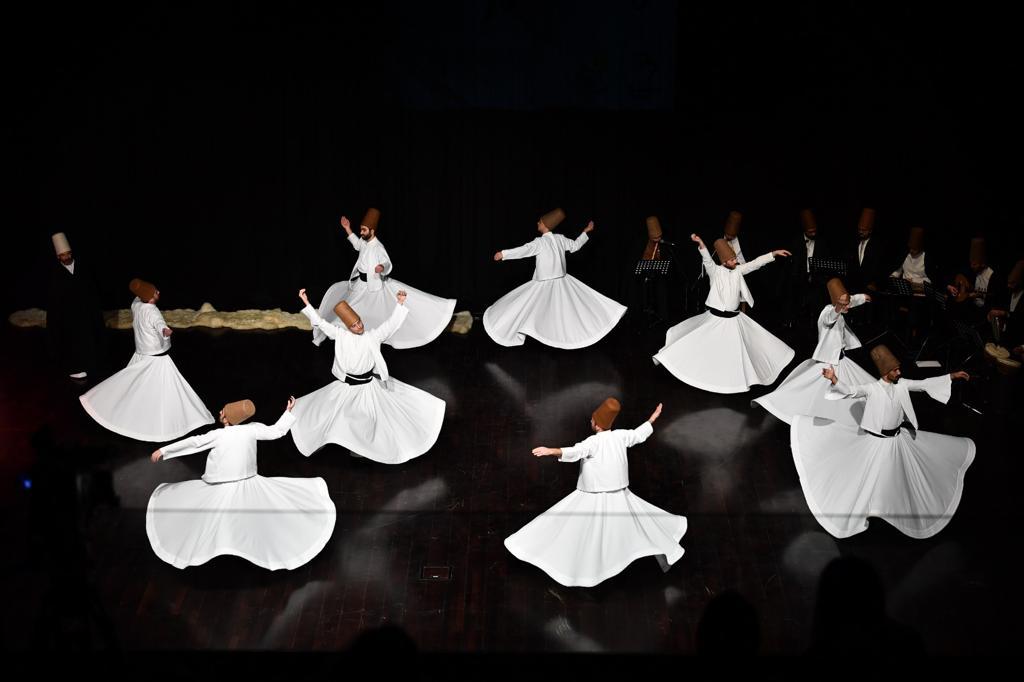Introduction

Sema is a profound spiritual ritual that has endured for centuries. Initially emerging as an individual form of worship, Sema became a means for dervishes to express their love and devotion to God, eventually evolving into a social and cultural ritual. In this article, we will answer fundamental questions such as what Sema is, how it is performed, and why it is considered so important, while also examining how Sema has evolved from Mevlana’s time to the present day.
What is Sema, and Why is it Performed?
The word "Sema" means "to hear" or "to listen." However, in the Mevlevi tradition, Sema is a form of worship in which dervishes express their love for God through music, words, and turning. As a Sufi practice, Sema reflects humanity’s longing to unite with God. Through this ritual, dervishes express their devotion to God, longing to detach from all worldly ties and direct themselves solely to God. Sema also symbolizes existence and the perpetual movement of creation; as Mevlana put it, all beings are in a state of continuous rotation before God, and Sema represents humanity’s conscious participation in this divine worship.
During Sema, dervishes turn with one hand extended upward (to receive from God) and the other downward (to transmit to the world). This turning symbolizes a spiritual purification and a journey of surrender to God. The dervishes whirl until they become lost in divine love, reaching a state of ecstasy accompanied by music and hymns. Sema expresses the journey of dervishes as they seek to reach God in their earthly journey.

Sema in the Time of Mevlana
In Mevlana’s time, Sema was far from the formal and organized ritual we see today. Back then, Sema was not practiced according to any strict set of rules but was instead a reflection of spiritual ecstasy, an outpouring of inner love. After meeting Shams-i Tabrizi, Mevlana embraced Sema and began practicing it fervently. After Shams' death, his interest in Sema intensified, making this practice a means for Mevlana to reach God.
In Mevlana’s time, Sema was not bound to any specific place of worship. Dervishes would often spontaneously begin to whirl after meals, during conversations, or even while walking in the street. These Semas were mostly performed individually, without any formal ritual or sequence, making Sema a free-form expression of inner worship. Guests and other dervishes were welcomed to join, and their spiritual journey was respected. Mevlana’s tolerance for a Christian dervish who wished to join Sema is also an indication of the ritual’s openness to all.
Over time, Sema gradually became a more formal and communal act of worship. However, it should be remembered that Mevlana saw Sema not as a set of rules but as a spiritual experience. During that period, Sema was an expression of the dervishes' love for God and thus maintained a free form.
Sema Today: The Evolution of the Mevlevi Tradition

After Mevlana’s death, Sema ceremonies gradually took on the ritualized form we know today. In 1460, when Pir Adil Celebi became the head of the Mevlevi order, he established a specific structure for Sema, turning it into a collective act of worship. From then on, Sema began to be performed ceremonially in special buildings called “Sema houses.”
This new arrangement introduced a formalized ceremony where dervishes begin the ritual by circling the space three times in "salât." They show their respect to the sheikh by bowing before him and then remove their cloaks to join the Sema. During their turning, one hand faces upward, receiving from God, while the other faces downward, conveying blessings to the world. Instruments like the ney and kudüm (types of traditional drums) are used to help the dervishes enter a state of ecstasy. With this structure, Sema became more organized and ceremonial.
Today, Sema is not only a religious practice exclusive to the Mevlevi order but is also performed as a cultural event. Every year, thousands gather in Konya to witness Sema ceremonies during the Mevlana Commemoration Ceremonies. Today, Sema continues to thrive as both an act of worship in the Mevlevi order and as a cultural treasure recognized worldwide.
Conclusion
For centuries, Sema has endured as an ancient form of worship, with dervishes turning in divine love, expressing the devotion and surrender within them. While this ritual was an expression of inner ecstasy in Mevlana’s time, it has since been institutionalized, taking on a formalized structure. Today, Sema is performed both as a religious practice and as a cultural heritage that attracts great interest. Sema is not merely a turning; it is a journey of surrender to God and divine love. As Mevlana once said: "It is the food of lovers, for in Sema, there is the hope of reuniting with the Beloved, with God."


